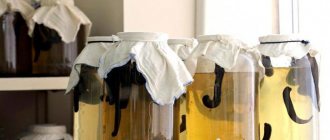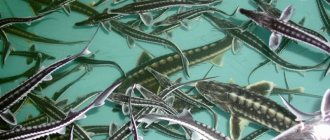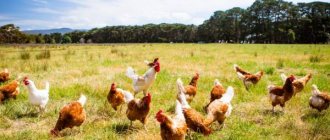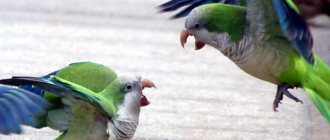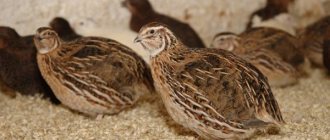Who is Mink?
Mink is a small predator from the mustelid family, which makes them similar to martens, otters, badgers and ferrets. Minks love to settle along the banks of rivers and large bodies of water, since the basis of their diet is fish, frogs and crayfish. However, the animal does not disdain small rodents and birds.
As a home, the animal uses either its own dug holes or those of others. For example, an abandoned burrow of a mole, a water rat, or even a low-lying hollow of a tree growing next to a pond would be suitable for this role.
Today, there are two species to which the name mink is applied—the American mink and the European mink. These are quite close, but still separate species of animals. They are very similar in appearance, lead a similar lifestyle, but do not interbreed in the wild, and therefore are ecological competitors of each other.
European mink
European minks have an elongated arched body and powerful short limbs. The average body length is 35-40 cm with a weight of just under 1 kg. Including the tail, the length is up to 60 cm. The paws have interdigital membranes, which simplifies hunting in the aquatic environment. The skin is covered with dense fur with a thick undercoat that practically does not get wet. Thanks to this, animals tolerate low temperatures, including cold water. The wool is colored predominantly dark brown. A characteristic feature is also the white muzzle, thanks to which the mink always looks very funny in the photo.
Until the middle of the last century, the European mink was widespread throughout almost all of Europe, with the exception of the north-west and the far south. However, to date, its habitat has narrowed to the Vologda and Arkhangelsk regions of Russia, as well as small isolated enclaves in Spain, Romania and the Baltic states.
The reasons for the disappearance of the animal from most of its historical range remain unclear, since not a single theory in this regard has been properly confirmed. It is believed that urbanization and the spread of the American mink in Europe only spurred the extinction of the “European” mink, but were not the original causes of this process.
American mink
The American mink is very similar in appearance to its European relative, but genetically it is closer to sables and martens. It is believed that “Americans” and “Europeans” arose as a species independently of each other (that is, they do not descend from a common ancestor), and their external similarity is the result of evolution in identical living conditions.
The body length of the “American” reaches 60 cm, and including the tail - 90 cm. The weight of an adult varies between 2-3 kg. The swimming membranes are poorly developed, but the fur cover is much thicker than that of the “Europeans” and is colored black and gray. In addition to size, the key difference between the American mink and the European one is the color of the muzzle: the “American” mink has only the lower lip and chin painted white, while the “European” mink has the entire muzzle white.
The historical habitat of this species is North America. Minks inhabit ¾ of the continent: they are not found only in the extreme northeast of Canada, the southwest of the United States, Mexico and the countries of the Isthmus of Panama. When the boom of industrial fur farming began in the 20th century, American minks were brought to Europe and the USSR for breeding in order to obtain valuable fur. The individuals that found themselves free quickly multiplied and occupied the ecological niche vacated by the extinction of the European mink. Today, American women are found everywhere in northern Europe and northern Asia, as well as in Japan.
The lifestyle and habits of the “American mink” are generally similar to the European mink, but thanks to their more massive body, they can hunt both small and relatively large prey, for example, muskrats and even poultry.
Choosing a direction to work
When evaluating any business, an entrepreneur makes a preliminary assessment of whether the business in question is profitable or not. In the case of mink breeding, the level of profitability will largely depend on the correct direction of work. You can choose one or combine several options:
- cultivation and subsequent sale of breeding animals;
- marketing of adults;
- sale of finished skins;
- sale of clothing made from natural fur.
If you sell the skins, you will have to master the appropriate technique or hire a person who will cut up the individuals. But selling fur products will require serious investments. It makes sense to leave this idea for the future, when mink breeding is established.
Domestic mink
Until the second half of the 19th century, there were no serious attempts to domesticate minks. Only when fur hunting ceased to satisfy the growing demand for fur did minks, along with other fur-bearing animals, become the object of fur farming. The real boom began in the 20th century in the USSR, which was accompanied by the creation of huge fur farms, where, among other things, American mink began to be bred.
Preference was given to the American mink in fur farming due to the fact that this animal produces higher quality and more beautiful fur. Today, along with Russia, mink breeding is most actively practiced in Scandinavia and Canada. And although fur farms also exist in other European countries, the volumes of fur production there are small. This is due to the fact that the highest quality and most expensive fur comes from animals raised in cold climates. Russian, Canadian and Scandinavian mink are especially valued in the world.
In the second half of the 20th century, minks began to be used as pets. Minks began to appear in apartments and private houses instead of annoying cats and dogs. Despite all the cuteness and funnyness of this animal, it has not gone through the same long path of selection and adaptation to the conditions of coexistence with humans as cats and dogs. Because of this, minks are much less amenable to training, cause a lot of trouble when kept at home, and get along very poorly with other domestic animals.
Minks tend to obey only one owner, ignoring or even being hostile to other family members, not to mention people who come to visit. Even ferrets, which are also not far from the wild state, are much more obedient and friendly pets.
However, this does not mean that minks are completely unsuitable for home keeping. If you take a puppy at as early an age as possible and put every effort into raising it from the very beginning, it may very well turn out to be a good-natured, cheerful and obedient pet mink.
Profitability of a business idea
Based on the successful experience of fur farm owners, the following calculations can be made. The construction of a turnkey fur farm, designed to support 230-250 animals, will cost about 500-600 thousand rubles. Purchasing young animals for breeding - 10-12 pairs - will cost 90-100 thousand rubles.
Further calculations will be made based on the initial population until the planned number of animals is reached. Hiring additional labor (based on care - 1 person per 50-60 minks) will require payment of wages starting from the need for workers (with an increase in the number of over 60 individuals) until reaching the planned number of animals (3-4 people, subject to participation in the work the farm owner himself) - approximately 6-7 months, and will amount (with a salary of 12-15 thousand rubles) to about 100 thousand rubles.
Purchasing feed will require an amount of 24-27 thousand rubles. It is advisable to set aside 50-60 thousand rubles for unforeseen expenses. In total, the total cost will be 800-900 thousand rubles.
The cost of one mink skin at wholesale prices varies from 100 to 350 rubles per 1 square decimeter and ultimately depends on its length and color. On average, one skin “pulls” from 1000 to 5000 rubles. The payback period for such a business is approximately 1 to 1.5 years.
Breeding mink - interview with the breeder
Mink: care and maintenance of a pet
Both European and American mink can be kept as a pet. However, due to the fact that the “European” is a rarer species and is even listed in the Red Book, American minks are still more common.
By and large, caring for and maintaining a mink in an apartment is not much different from keeping a ferret. The only difference is that minks are very freedom-loving and perceive being kept in a cage extremely negatively. This animal is quite easy to train to a tray, and it is not at all picky about food. Typically, mink are fed mixtures of rice or buckwheat porridge and minced meat. Any meat will do: poultry, fish, beef, pork. You can also use ready-made cat food.
Since minks have a fairly fast metabolism, they are mobile and active. The Internet is full of videos of minks frolicking and mischievous. This is a really funny and cheerful animal, so to minimize damage to the apartment you need to equip a small “playground” for the animal in the apartment. It is also highly advisable to regularly take the animal for a walk.
At the same time, you need to be prepared for the fact that while you are not at home, your pet will independently arrange your things there and in the form in which it is convenient for him. Sharp claws and a flexible body allow the mink to climb anywhere, including places from which it can no longer get out. So, during your absence, it is better to lock the animal in a spacious cage or enclosure.
Minks have a great passion for water, so you need to provide the animal with at least an imitation of a reservoir - a basin or a small personal bath. The mink will be very grateful to you for this pleasure.
Like ferrets, minks have a noticeable, specific odor. It is impossible to completely get rid of it, but by regularly cleaning the “nest”, it can be significantly reduced. To maintain the health of a domestic mink, it must be periodically vaccinated (especially if the mink often walks outside) and dewormed.
Successful purchase
If you have weighed all the pros and cons of keeping a mink at home and still decide to get such a pet, you can go to a pet store. But how to choose a healthy animal?
First of all, you should pay attention to the behavior of the mink. If the animal behaves playfully and noisily, and is active, this is good. The mink skin should be clean and shiny, there should be no wounds on the skin, and dry under the tail, without traces of feces. These signs indicate the health of the animal with valuable fur.
Domestic minks are unpretentious pets, but demanding. They need your attention, affection and care, as well as unlimited patience for their antics. If all this is enough, the mink will become your cheerful, faithful friend for 7-8 years.
educationtraininganimalsminkpetcare
Mink as a fur-bearing animal
Mink is one of the most valuable fur-bearing animals bred in captivity. It “supplies” the lion’s share of the fur used in clothing and other fur products. Everyone has heard the expression “mink coat” and “Pyatigorsk mink”. This is just about these animals.
Today, according to various sources, minks provide about 70-80% of the world's demand for fur. Such a large market share is explained by the fact that among all fur-bearing animals, mink reproduces best in captivity. The creation of a mink fur farm is fundamentally not much different from the organization of any other agricultural enterprise in the livestock industry. Here, the main task of the entrepreneur is still the same - to create normal conditions for animals in cages, provide food, ensure communication between father and mother of minks for the production of children, establish a system for slaughtering animals and marketing finished products. There are no problems with the latter, since the demand for fur is very high.
The main feature and difference between the mink and other farm animals is that they are not herbivores, but predators. So you need to feed them not grain and grass, but meat. Also, an entrepreneur who wants to open a fur farm should keep in mind that the commercial characteristics of skins (fur) are directly related to the climatic zone in which the animals grew up. The further north you go, the thicker and warmer the fur the animals acquire. Accordingly, a mink farm located in the Arkhangelsk or Murmansk region will always be more profitable than a farm near Rostov or Astrakhan.
Methods for processing skins
If an entrepreneur is engaged in raising minks for the subsequent sale of skins, then he will need to hire a specialist or independently master the technique of processing skins. Usually slaughter takes place in mid-autumn. They most often use one of the following methods:
- After removing the skin, its inside is cleaned of any remaining meat and fat. Next, the products are laid out with the fur on the bottom and the surface is allowed to cool. Only after this the skin is covered with salt and allowed to dry completely. This usually takes a couple of days.
- Immediately after cutting the animal, the skins are placed in a saline solution for a couple of hours. Then they are taken out and laid out on a smooth surface. They are left in this position for several days to dry completely.
